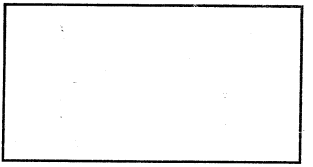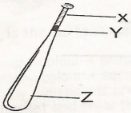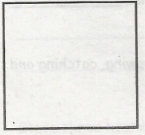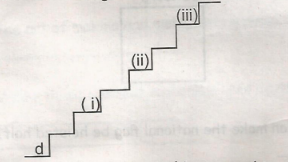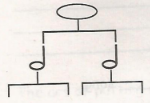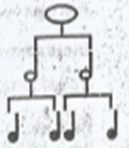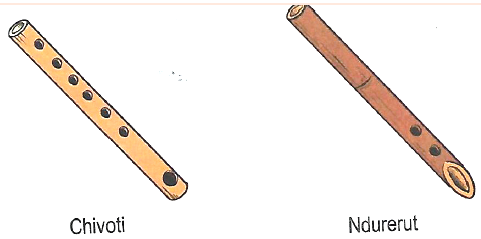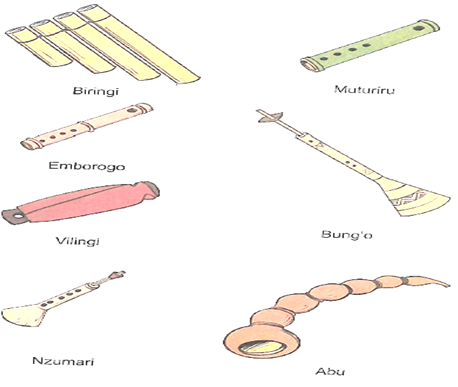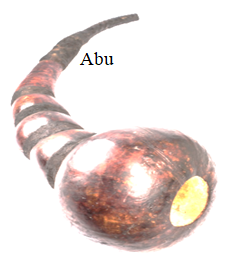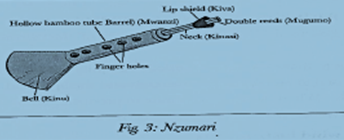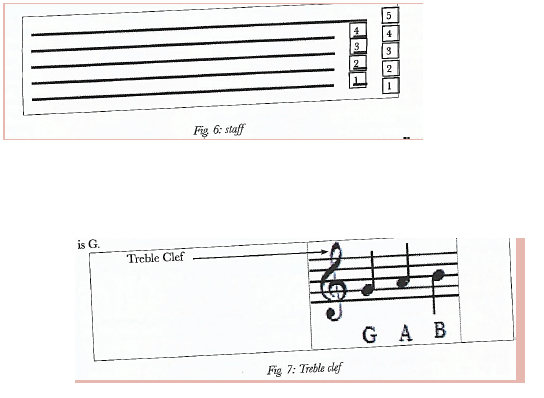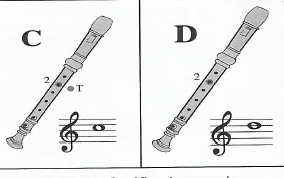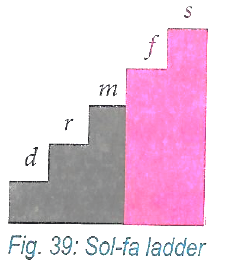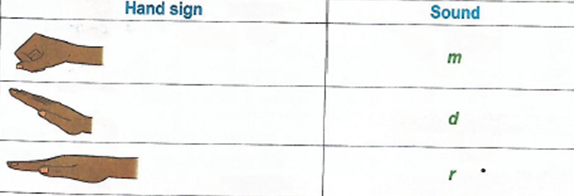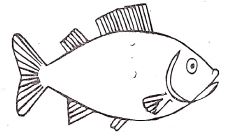Displaying items by tag: music
Art & Craft, Music and P.H.E Questions and Answers - Grade 5 End of Term 2 Exams Set 2
SECTION A
ART AND CRAFT (20MARKS)
- Name three things you can use when making wax crayons.
- ____________________________
- ____________________________
- ____________________________
- Name one primary colour _____________________________
- Give 2 examples of secondary colours.
- _______________________________________
- ________________________________________
- Name two materials that you can use for basketry.
- ____________________________________
- ____________________________________
- A place where we dry and harden the modelled items is called a ________________________________________
- Which technique has been used to add value in the picture below?
(cross hatching, smuldge)
- _____________ is the surface appearance of an object. (value, colour, shade)
-
- Primary colour + primary colour = ________________________
- Primary colour + 'secondary colour = ______________________
- How many dimensions are there in a 3D artwork?__________________________________
- Draw a basket and show the warps.
SECTION B (20 MARKS)
MUSIC.
- Some songs are sung when people are happy while others are sang when people are sad. Sadness or happiness in a song is the ____________________________ (tone, mood, value)
- Write the first line of the East African Community Anthem.
___________________________________________________
___________________________________________________
___________________________________________________ - When two voices are in agreement while singing together, they are said to be in ______________________________
(speed, harmony, rhythm) - In which languages are folk songs perfomed? __________________________________
- I am the person who plays instruments in a song. What is my name? ________________________________
- How do we play this instrument?
______________________________________
- We play this instrument by ___________________________
- Name two parts of a descant decorder.
- _____________________________________
- _____________________________________
- Draw a symbol for the following note.
tag
SECTION C (20 MARKS)
PHYSICAL AND HEALTH EDUCATION
- Explain the meaning of the following commands as used while starting an elongated start in athletics.
- On your marks - __________________________
- Get set - ___________________________
- Go - __________________________
- Identify the four stages of hurdling.
- _______________________________
- _______________________________
- _______________________________
- _______________________________
- Name three physical fitness gained from participating in hurdling events.
- ____________________________________
- ____________________________________
- ____________________________________
- Identify two tools and equipment that are needed while playing softball.
- ____________________________________
- ____________________________________
- The diagram below shows a softball bat. Name the parts labelled X, Y, and Z.
X_____________________________
Y_____________________________
z_____________________________ - Name 2 examples of throwing skills in the game of rounders.
- _____________________________________
- _____________________________________
- Briefly explain the following terms as used in the game of rounders.
- Push pass ___________________________________
- Stance ______________________________________
- Stamping ____________________________________
MARKING SCHEME
Section A: Art and Craft
-
- Paraffin
- Cutting tools
- Bees wax
- Blue/yellow/red
-
- Orange
- Green
-
- Banana fibres
- Palm leaves
- Sisal fibres
- Kiln
- Cross hatching
- Colour
-
- Secondary colour
- Tertiary colour
- 3 dimensions
- Check diagram
Section B: Music
- Mood
- Ee Mungu twaomba uilinde
- Harmony
- Local languages
- An instrumentalist
- By hitting
- Blowing
-
- Mouth piece
- Thimble hole
- Check diagram
Section C; P.H.E
-
- The body shpould be in a crouch position
- Get ready with the whole body while the hips are raised abovethe shoulders.
- Press hard against the nground for a forward push
-
- Approach
- Take off
- Flight
- Hurdle clearance
-
- Makes bones and muscles stronger
- Makes one to be active
- Promotes brain function
-
- bats
- soft balls
- X-knob
Y-Handle
Z- Barrel -
- Under arm
- Over arm
-
- It is a type of pass used to move a ball by a push action
- Refers to the placement of a kicking foot and the arms when performing a push pass
- Stepping on a player who is on the ground.
Art & craft/Music Questions and Answers - Grade 5 End of Term 2 Exams Set 1
ART AND CRAFT
- A group of continous dots form a ___________________________.
- Write three ways of making items in basketry.
- ________________________
- ________________________
- ________________________
- The art of making and manipulating puppets in a performance is called ___________________________
- Write three available materials used to make a glove puppet.
- ______________________________
- ______________________________
- ______________________________
- Which of the following is NOT useful when having a smudge technique lesson? ______________________________
(crayons, charcoal, dye) - A person who operates puppets is called a _______________________________
- Write digital devices used to take photos of our artwork.
- _____________________________
- _____________________________
- Thonging technique is used in ____________________________
- List three primary colours.
- ___________________________
- ___________________________
- ___________________________
- The art of putting artwork in frames before displaying them is called _________________________
- The art of making items from stones of a piece of wood is called ___________________________
- Which part of body is used to manipulate string puppets? ______________________________
- We add black colour to other colours to form _________________________________ effect.
- Draw the following tools.
- Brush
- Scissors
- Brush
MUSIC
- Write two reasons which can make the national flag be hoisted half?
- __________________________
- __________________________
- List two non melodic percussion instruments.
- __________________________
- __________________________
- State three methods used to play percussion instruments.
- __________________________
- __________________________
- __________________________
- A group of men singing during worship in church form a _
Pupils sang the song below.
Tuishangilie Kenya
Taifa letu tukufu
Kenya tunayoipenda
Daima -
- The song sung by the pupils is a __________________________________ song.
- The song was sung to ______________________________ our country.
- Lullabies are sung in ________________________ tempo. (slow, quick, high)
- Name two male voices in choir.
- __________________________________
- __________________________________
- Fill in the missing sounds in the solfa ladder.
- Draw the following musical instruments.
- Kayamba
- Fluter
- Kayamba
- Name two musical notes below.
-
_____________________________
-
____________________________
-
______________________________
-
- Complete the folllowing
MARKING SCHEME
Art and Craft
- Line
-
- Twining
- Plaiting
- Coiling
- Puppetry
-
- Old clean socks
- Glue
- Buttons
- Fibre
- Dye
- Puppeteer
-
- Camera
- Mobile phone
- Tablet
- Laptop
- Leather
-
- Red
- Blue
- Yellow
- Mounting
- Carving
- Hand
- darker
-
- Brush
- Scissors
Music
-
- Death of a president in another country
- Death pof current president in a country
-
- Drums
- Bells
- Shakers
- Jingles
- Kayamba
-
- Shaking
- Hitting
- Plucking
- Choir
-
- Patriotic
- Praise
- Slow
-
- Bass
- Tenor
-
- m
- s
- t
-
- kayamba
- flute
-
- crochet
- Semi breve
- Quaver
-
Listening, Responding and Appreciation - CBC Grade 5 Music Revision Notes
Element Of Music
The following are musical instruments
Pitch – the highness or lowness of sound. The combination of varied pitches produces a melody e.g pitch pipe
Melody – should be done keenly as it is difficult to correct once mastered. Use melodies or songs familiar for the start.
Dynamics – relates to the volume of sound. This can either be loud or soft. Dynamics influence the expressiveness in a performance.
Beat /Pulse – regular through of music. The following activity helps in identifying beat.
- Clapping/tapping
- Chanting the words of familiar songs rhythmically
- Conducting learners
Tempo – refers to pace or sped of music.
Activities such as clapping, tapping, marching can be use when teaching about tempo
Responses to tempo are communicated through by running, walking jogging, or skipping.
Mood- this involves feeling about the songs, whether happy or sad
Form – is the structure or shape of piece of music, it is dictated by the melody. The rhythms and repetition on the piece
It is always shown with letters such as //A// OT //B// or //AB//
Grade 5 focuses on //ab//. The part is always the stanza while the B part represents the chorus.
Kenya Indigenous Musical Instrument - CBC Grade 5 Music Revision Notes
Wind Instrument
- They are also called aero phones. They are played by blowing
These instruments have a permanent tuning which is acquired during construct - This is because upon constructions, wind instruments remain of fixed length, have a fix number of holes and a fixed blowing hole.
- They vary in shape, size and material used to make them. They are grouped in the following sub- classes”
- Horns- made from animal horns or natural hollow or hollowed out wooden tubes. Among some communities horns are joined to a gourd. E.g.
- Oluika- luya
- Lalet-kalenjin
- Oporo/tung’-Luo
- Coro-kikuyu
- Kikundit-kipsigit
- Adet-turkana
- Aluti-Teso
- Flutes-Are made from materials such as bamboo, swamp reeds, twig or wooden tubes. Currently improvised using plastic tubes.
Flutes vary in length and number of finger / pitch holes from one community to another.
Other features that can be used to distinguish or differentiate flutes are:
- closed at both ends
- Open at both ends
- Open at one end and closed at another end
- Notched at the blowing end (part of the end is v-shaped)
- Round at the blowing end
- End blown (also oblique)
Side blown (also traversely blown-this means the blowing hole is at the side of the flute.)
Indigenous flutes from the diverse Kenyan communities include:
End blown flutes (oblique)- Muturiri-Gikuyu
- Auleru-Teso
- Asili/Odundu-Luo
- Ndererut-Kalenjin
- Ebune/Elamaru-Turkana
Traversely held flutes - Chivoti-Digo, Rabai, Duruma
- Ekibiswi-Kuria
- Emborogo-Kuria
- Umwere-Kuria
- Mulele-Luhya
- Whistles – these wind instruments are made from hollow tubes or reeds which are bound together. The different length makes it possible to produce different varied pitches when the instrument is blown e.g. biringi of Agikuyu, vilingi of the Akamba.
- Reed instruments – double reed instruments have two reeds at the mouthpiece which is made from reeds. The two reed instruments have a tip shield made out of a coconut shell of metal coin
The lip shield- holds the reed in place and prevents air from escaping. The reeds vibrate when air is blown into the instrument thus producing sound. The Nzumari and the Bung’o played among some of the mijikenda community such as Digo and Rabai.
Functions of parts of flutes
- Bamboo reed - this is the main framework of the instrument and it also serves as the resonator
- Blowing hole – it is a hole through which air is blown causing the production of sound
- Pitch hole – are closed and opened with alternating finger movements to produce varied pitch when playing the melody.
- Closed – end = this part direct the sounds towards the open end.
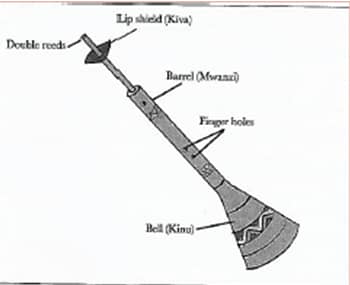
FUNCTIONS OF THE PARTS OF REED INSTRUMENTS
- Hollow bamboo reed – this is the main body of the instrument which act as a resonator
- Bell - it is used to make the sound louder or amplify the sound
- Neck - use to attach the double reeds and the lip shield
- Double reeds - when blown, they vibrate to produce sound
- Lip shield – this is where the lip rest when blowing
SKILLS OF PLAYING WIND INSTRUMENTS
- Some are held traversely while others are end blown
- Positioning of the lips – the lower lip is placed on the lower part of the blowing hole
- Blowing- air should be blown across the blowing hole. The amount of air being blown depends of the wind instrument.
- Tonguing - the tongue is used to put the accent on
- Fingering – closing and opening of finger holes in an alternating manner assist to produce varied pitch.
- Breath control – it’s also referred to as phrasing and should be done at appropriate places when playing the wind instrument.
Western Musical Instrument
Descant Recorder
Recorder fingering chart
Skills of playing the recorder
- Posture – correct poster will help in breathing deeply in order to get good sound out of the recorder.
- Breath control – enables them to achieve the good phrasing when playing the descant recorder.
- Holding – should be held properly with both left handed and right handed learners. The recorder is end blown.
- Embouchure - refers to the position and the use of the lips and teeth in playing wind instrument. It includes shaping the lips to the mouthpiece of the musical wind instrument
Embouchure is important because it affect the production of quality of sound - Articulation – (preparing the tongue) air flow is critical to the production of good tone or sound on the descant recorder. Blowing too much air will leard to production of squeaking sound.
- Fingering – the left hand should be placed in the first three holes, while the right hand should be placed in the rest of the holes. Holes should be covered completely, failure to which will cause air to escape and a squeaking sound will be produced.
When holes on the descant recorder are covered completely, small round marks will be imprinted on the fingersTHE NOTES B, A AND G
They are played using the left hand and are organized logically with fingers moving in a sequential order.
Music Staff Notation
THE STAFF- this is a set of five parallel line and four spaces on which music is written.
The lines and spaces are named using the seven letters of the English alphabets A,B,C,D,E,F, and G.
Naming is made possible using clef. The treble or G clef is used to establish the pitches of the staff
Music for the descant recorder is written on the staff using the treble Or G clef.
Fingering notes is illustrated below
NEW NOTES C AND D
- They are fingered using the left hand as shown below
- The left hand thumb hole is left open when playing the note D
Kenyan Folk Dances
Dance - a form of art involving rhythmic movement’s f the body in response to music
It is an expression of norms, values, belief, attitudes and customs of the community.
In traditional African society dances are for specific groups of the performance e.g. boys, girls, boys and girls, young women and
Categories of participants
- Soloist – introduces dances, it is also known as Solo choral response or call response singing.
Roles of a soloist- Starting the dance
- Ending dance
- Help capture the message and the mood of the dance
- Pitching the dance songs
- Cuing dance on the change of melodies, movements and dance formations.
- Dancers – perform dance movements, create formations
- Dancers – perform dance movement. create formations
- Lead dancers – remind dancers the next dance style and formation. Guide other dancers in creating the varied dance styles/movement and formations to ensure transitions to ensure transitions are smooth.
- Singers - respond to the call of soloist. Make performance lively. Communicate the message and the mood of the dance
- Instrumentalist – make the dance performance lively.
Melodic instrument helps in pitching the performance.
Help in keeping the steady beat of the songs.
Assist to cue singers and dancers on the change of melodies, dance styles and formations to ensure smooth transition.
Provide rhythmic and melodic support to the rhythms and melodies in dance. - Audience and onlookers – make participants feel appreciated
Their participations bring the dance to life
Costumes
This involves styles of dress or clothes worn by the participants in dance performance. Roles of costumes in dance performance include:
- To depict the cultural community it is drawn from.
- To adorn the participant
- To distinguish the different roles played by various participants of the dance
- Influence the participant level of confidence
- Allow dancers or the wearers freedom of movement and formation
- Give information about certain role or characters due to elaborate details of the costumes
- They give the participant of the dance aesthetic appeal
- Are associated with the costumes and habits of a group of people
- Gives the participant dignity
- Help the identify the community the song originates from
- Create uniformity among the participant
- In modern times dance performance use uniform costumes made of sisal and banana leaves
- In each community there are items of value which the participants use during dancing. These items are also known as artifacts which includes shields, swords, skis and traditional tools.
Body Adornment
- It is an art which involved decorating the body, these vary across communities and can be permanent or temporary
- Permanent body adornment is done by piercing, scarification or tattoos, both are used to enhance beauty and also have social and ritual significance
- Some adorn using temporary designs using pain, ochre and henna to decorate the skin. The decoration can symbolize a variety of meaning e.g. social, economic or marital or even political status of the wearer.
- In some communities it is used to enhance the feminity or masculinity of an individual.
- The most common method used nowadays is by water emulsion pain
The type of body adornment used is influenced by the occasion /event or an individual’s stage in life.
Ornaments
Are accessories, articles or items used to add beauty or decorate the appearance of the participants in dance.
In some communities’ beadwork is an integral part of making ornament, beads used in making ornaments can vary in shape, size and colour. The ornaments include.
- Earring
- Armlets/armbands
- Anklets
- Necklaces
- Feathers
Creating /composing
Is a succession of sound with long, short or equal duration. It is the pattern of the music in a given time. It can exist without a rhythm.
The long and short the French rhythm names are used to create different rhythms and represented by different matching symbol. These musical symbol are the musical notes.
| French rythm name | Length of sound |
| Taa | 1 long sound |
| Ta-te | 2 long sounds |
| Taa-aa | 2 long sounds |
| Taa-aa-aa-aa | 4 long sounds |
| French rythm name | Note symbol | Note name | Length of sound | Number of beats |
| Taa | |
Crochet | 1 long sound | 1 beat |
| Ta-te | |
Quavers | 2 long sounds | ½ a beat for each quaver |
| Taa-aa | |
Minim | 2 long sounds | 2 beats |
| Taa-aa-aa-aa | |
Semibreve | 4 long sounds | 4 beats |
Words have their natural speeches style which dictates whether to be given either along or a short beat. Syllables in words can be stressed while others are not.
The stressed syllables occurs as strong beats while the unstressed syllables as week beats.
The beats are divided into groups of two beats, three beats or four beats
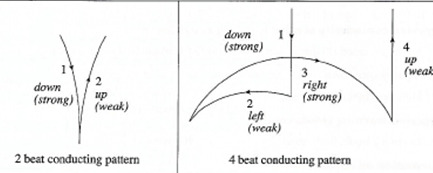
Melody
Is a sequence of pleasant sounds that makes up musical phrase
It is a tune that sound nice or pleasant to the ears
An understanding of high and low sounds is essential in identifying melodic variations within a song. Variation to simple melodies can be created by
- Repetition
- Changing doh
- Changing rhythms
- Changing note
- Changing words
Hand Signs
It is a good way of understanding and recognizing pitch. These are gestures used to indicate pitch in sol –fa.
When using hand gestures to guide the pitch of the ‘’doh’ is movable (it is not fixed)
Hand signs showing sol-fa syllables
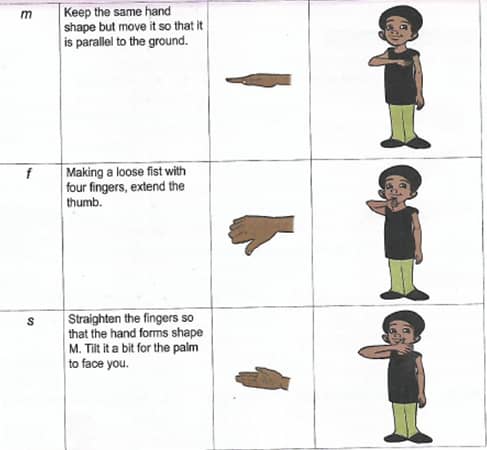
Hand signs showing sol-fa syllables
Performing - CBC Grade 5 Music Revision Notes
Songs
Repertoire - This is a wide collection of songs. It varies in language, events or occasions and activities relevant to the learners.
There are various categories of songs to be learnt in Grade 5
They include
- Religious songs
- Patriotic songs
- Topical songs
- Popular songs
The criteria for choosing songs should include
- Simplicity in text and, rhythm and melody
- Stepwise movement of melodies
- Call and responsorial.
- Songs with catchy appealing melodies.
- Strophic infrastructure (songs with different verses which are sung to the same music).
- Full appropriate activities / actions for the learners.
Types of Songs
- Patriotic songs – They are sung in praise of a county and its leaders. They emphasize on patriotism and social cohesion eg Kenya, Kenya Taifa Leo.
- Topical songs – they are used to convey special message on pertinent and contemporary issue. These include safety, personal hygiene, health and nutrition, importance of education environmental conservation and values. Corona Ni Atari, wash your hands.
- Religious / sacred songs – They are imposed for religious purpose e.g. Christianity, Islam and Hinduism use their sacred songs to worship and praise a divine.
- Popular songs – They have great appeal to listeners. Such songs cause an audience to easily dance or sing along. The lyrics. Rhythm, melody or genre can influence the popularity of the songs.
The East African Anthem
- It is also known as wimbo wa Jumuiya ya Africa Mashariki in Kiswahili
- It has three verses which are sung in Kiswahili
- It is also commonly or simply referred to as EACA (EAST AFRICAN COMMUNITY ANTHEM)
- The anthem is sung among the east African community members states namely: Kenya, Rwanda, South Sudan, Tanzania and Uganda.
- The music of EAC anthem is presented in two scores namely:
- A choral music score written for Soprano, Alto ,Tenor and Bass
- Brass band music score written for the western brass musical instrument.
- In grade 5 it is limited to being sung in unison using Soprano melody.
- It is to be sung once the East African Communities has been hosted in all government and public learning institutions in Kenya.
- Both the Kenya National Anthem and the EACA should be performed at public events with the aim of boosting the East African Community integration and also as a symbol of unity among the East African community member states.
Guidelines of Performing the EACA
- During and the occasion of the performance, everyone present should stand to show a sign of respect.
- EACA citizens shall sing or play the anthem during the occasions or regional significance.
- Individuals playing or singing the EACA should ensure that the tune and the lyrics (words) are sung with the dignity it deserves.
- Either the instrumental or sung version will be performed.
Occasions during which the EACA is performed
- During all the EACA summit meeting and commemoration days.
- During any occasion of the community where the head of the state is present, two verses of the anthem shall be sung or played
- Any other occasion
Skills and concepts to be developed in singing
Accuracy in pitch, rhythm and words should be observed while singing the various types of songs.
Learners should observe the natural speech rhythm of the words of the songs which define the rhythmic pattern of the songs
PART SINGING
There are indicators to show that learners are ready to sing in parts, they include:
- Singing in tune and unison without support of either the voice or instrumental accompaniment.
- Accurate imitation of melodic phrases and phrases and rhythmic patterns.
- Confidence while singing alone with others.
Questions
- Name three types of songs?
- Write occasions when patriotic songs are performed?
- When should the East African Community Anthem should be sung in Kenya?
- Write the Kenya National Anthem verse 1 in Kiswahili?
- Name any three voices in a three part song?
Kenya Folk Songs
- Singing is part and parcel of everyday life in any community. This habitual practice is deeply embedded in every cultural activity within the community.
- It plays and integral part in ritual and social event within a community.
- Folk songs are songs sung in particular community.
- It originates among the people of particular are or locality.
- They are sung in the local dialect or language of the community they originates from.
- The songs are handed down from singer to singe or from one generation to another by oral tradition
- Folk song starts at welcoming of birth once new born baby takes the first breath.
- As an individual, he or she celebrates rite of passage which introduce them to adult responsibilities as captured in work songs, wedding songs, initiations songs, praise songs and when an individual dies, dirges (funeral songs)
- The circumstance/events/occasions within which the folk songs are performed dictate the message, gender and aged of the participant.
- Folk songs tell stories, give a snippet of the past life and highlight various areas of life shared across the cultures and shed life don similarities between people.
Folk songs serve the following roles
- Preserves community culture
- Define cultural identity/helps to distinguish one community from the other.
- Used as a medium of communication
- Enhance or strengthen unity or solidarity within the community.
- Enhances conformity to social norms of the community.
- Creates/provides a medium forum of emotional expression
ASPECT OF FOLK SONGS
- OCCASIONS
life is punctuated by different events or occasions. The events are influenced by community tradition, customs and history e.g ritual and social occasions such as birth of baby, work, marriage, funerals initiations and religious ceremonies. Each occasion has its own special song. - MESSAGES
Folk songs play a communicative role. The various occasions dictate that the song sung have messages that are appropriate to the ceremony or event. The messages as communicated through text, dictate the mood of the folk songs.
Folk songs are appropriate and uphold community values, virtues, customs and norms - INSTRUMENTATION
Community diversity is also evident through the varied array of musical instruments.
In most community, musical instruments are used to accompany folk songs. Music instruments can either be melodic or rhythmic.
During the performance of folk songs, music instruments can be played for the following reasons:- To support the melody/tune
- To pitch the performance
- Make the performance interesting /lively
- To provide rhythmic support
- To fill up the interludes during the performance
- Help in keeping the steady beat
- PARTICIPANTS
Folk songs are performed in groups or as solo. Participants vary in age and gender. They include; soloist, singers and instrumentalist.
The occasions during which folk songs are performed influences the age group and gender of participants e.g. boys and girls, men and women
African folk songs are largely responsorial in style also referred to as solo choral response
A soloist can either be male or female. A good soloist should be confident and audible.
Roles of a soloist in a folk song
- Pitching singers so that they sing without straining
- To cue singers on the change of melody or body movements
- Address the audience while commanding singers
- To coordinate the movements during the performance.
The choral groups/response sings the same tune/ melody throughout the performance of folk song. This referred to as singing in unison
The vocal power of the choral response must match the vocal strength of the soloist
PERFORMANCE ETIQUETTE DURING FOLK SONGS
- Dress appropriately
- Talking – this distracts the performance
- Reactions to others - e.g. during a mistakes, it is wrong to stare, mock or boo.
- Maintain enough space between the participant to avoid collision
- Always accept and acknowledge the applause from any audience.
Questions
- The participant who leads a folk song is known as ………………..
- A folk song belongs to ………….. of community
- Name any other occasion when a folk song is performed.
Integrated Learning Areas - Grade 5 End Term 1 Exam 2021 SET 2
COMPETENCY BASED CURICULUM
GRADE 5, END OF TERM 1
INTEGRATED LEARNING AREAS
NAME....................................................SCHOOL...............................
ART & CRAFT
- List 5 materials that are needed when creating a still life composition using smudge technique.
___________________
___________________
___________________
___________________
___________________ - In the space beiow, draw two overlapped cylindrical forms and shade using cross hatching technique to create light and dark effect.
- List 5 materials that are needed to create crayon etching pictorial compositions.
___________________
___________________
___________________
___________________
___________________ - Write 5 secondary colours you know.
___________________
___________________
___________________
___________________
___________________ - What is painting?
____________________________________________________________________________ - Draw and paint a colour wheel to show primary, secondary and tertiary colours.
- List any 3 materials that are needed when drawing a colour wheel.
___________________
___________________
___________________
MUSIC
- Explain what these songs are:
- Patriotic songs _______________________________________________________________________________________________
- Lullaby songs
_______________________________________________________________________________________________ - Action songs
_______________________________________________________________________________________________ - Topical songs
_______________________________________________________________________________________________ - Sacred songs
_______________________________________________________________________________________________
- Write the first verse of the East African Anthem in Kiswahili. (5 marks)
____________________________________________________________________________________________________________________________________________________________________________________________________________________________________________________________________________________________________________________________________________________________________________________________________________________________________________________________ - Outline 4 aspects of folk songs.
______________________________________
______________________________________
______________________________________
______________________________________ - State 4 safety measures that should be observed when performing folk songs.
______________________________________
______________________________________
______________________________________
______________________________________ - Name 4 Kenyan musical instruments:
______________________________________
______________________________________
______________________________________
______________________________________ - Draw a descant recorder in the space below.
PHYSICAL & HEALTH EDUCATION
- Give 4 health benefits gained through participating in running
______________________________________
______________________________________
______________________________________
______________________________________ - Outline 2 safety measures that should be observed when practising the -run through finish' technique.
______________________________________
______________________________________ - List 2 materials that can be used to improvise a relay baton.
___________________
___________________ - Give 4 safety measures that should be observed when improvising'a relay baton.
______________________________________
______________________________________
______________________________________
______________________________________ - Draw a relay baton in the space below.
- Explain the term straddle as used in skipping rope.
_______________________________________________________________________________________________ - Outline 4 safety measures that should be observed when practising straddle to avoid injuries.
______________________________________
______________________________________
______________________________________
______________________________________ - List 5 health benefits of rope skipping.
______________________________________
______________________________________
______________________________________
______________________________________
______________________________________ - List 3 responsibilities of infield players when playing batting
games.
______________________________________
______________________________________
______________________________________ - Outline three qualities of a good outfield player when playing batting games.
______________________________________
______________________________________
______________________________________
Art & Craft An Music- Grade 5 End Term 1 Exam 2021 SET 1
COMPETENCY BASED CURICULUM
GRADE 5, END OF TERM 1
ART & CRFT AND MUSIC
NAME....................................................SCHOOL............................................
ART & CRAFT
- Identify three materials for making rod puppets
_______________________
_______________________
_______________________ - Name three items that can be made out of clay
_______________________
_______________________
_______________________ - Identify three materials you will need to make montage composition
_______________________
_______________________
_______________________
_______________________ - _______________is smearing colour on to a surface
- Draw and colour a flower
- List down materials for making value graduation strip
_______________________
_______________________
_______________________ - Colour the diagram below
MUSIC
- What is pitch in music?
_____________________________________________________________________ - Songs sung in praise of our God are called _______________________
(lullabis, sacred songs) - Name two items used to colour a flower vase
_______________________
_______________________ - _____________ are clothes worn when dancing folk dances.
- Name four colours found on the national flag
_______________________
_______________________
_______________________
_______________________ - Draw and colour descant recorder
- Identify two musical instruments in your locality
_______________________
_______________________ - Colour red on the flag stands for:
_______________________
(blood, peace) - We should stand at _______________ when singing National Anthem.
- Draw and colour a shaker in the box below.
- "Lala mtoto lala" is an example of a __________ song.
MARKING SCHEME
ART & CRAFT
- wood/sticks, small ball/fabric, strings
- pots, sculptures, cups, plates, vases
- painting
- student should draw and colour a flower
- strips of paper/paper, tape, different colours shades
- student should colour the image
MUSIC
- the softness or deepness of a sound(vibration)
- sacred songs
- acrylic paint,paint brush
- folk dance costumes
- black,white, red, green
- student should draw and colour a descant recorder
- guitar, drums, piano(any other music instrument named by the student
- blood
- attention
- student should draw and colour a shaker
- lullaby


